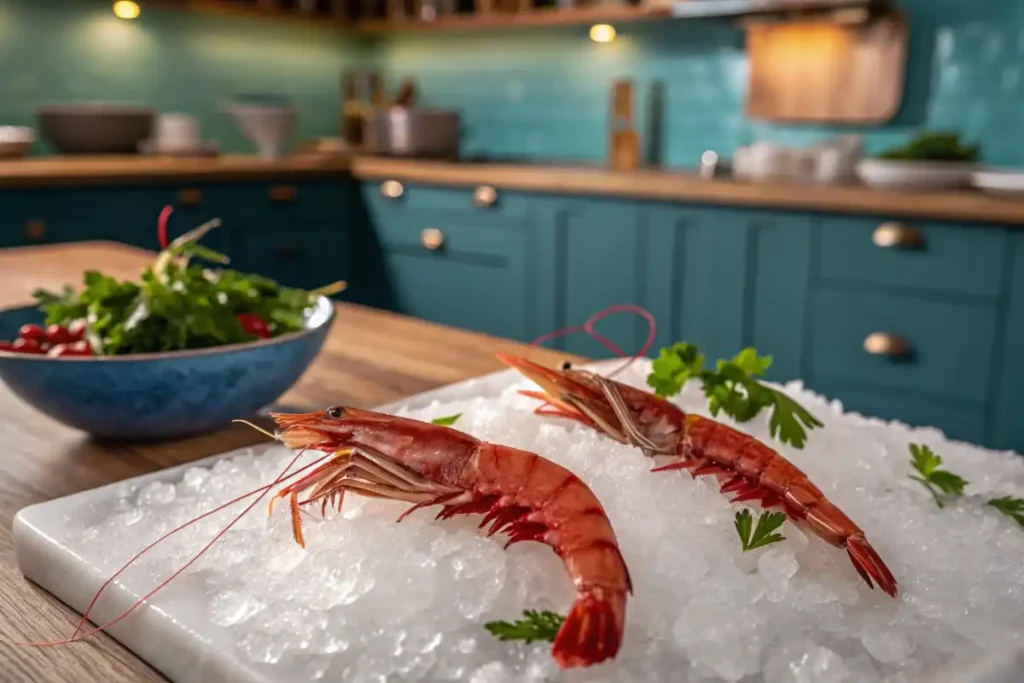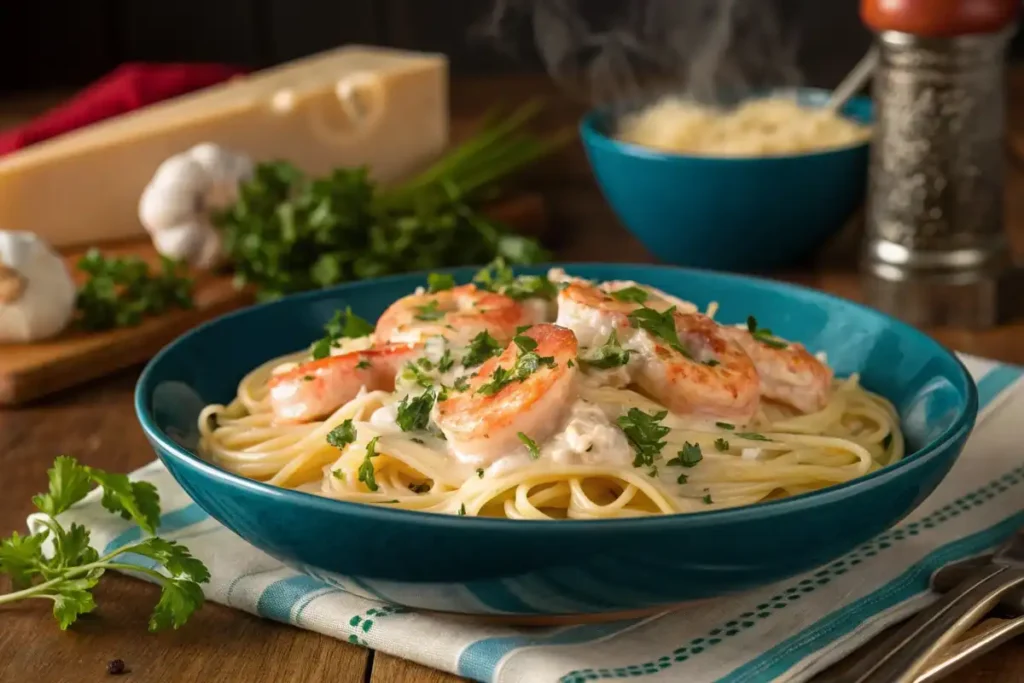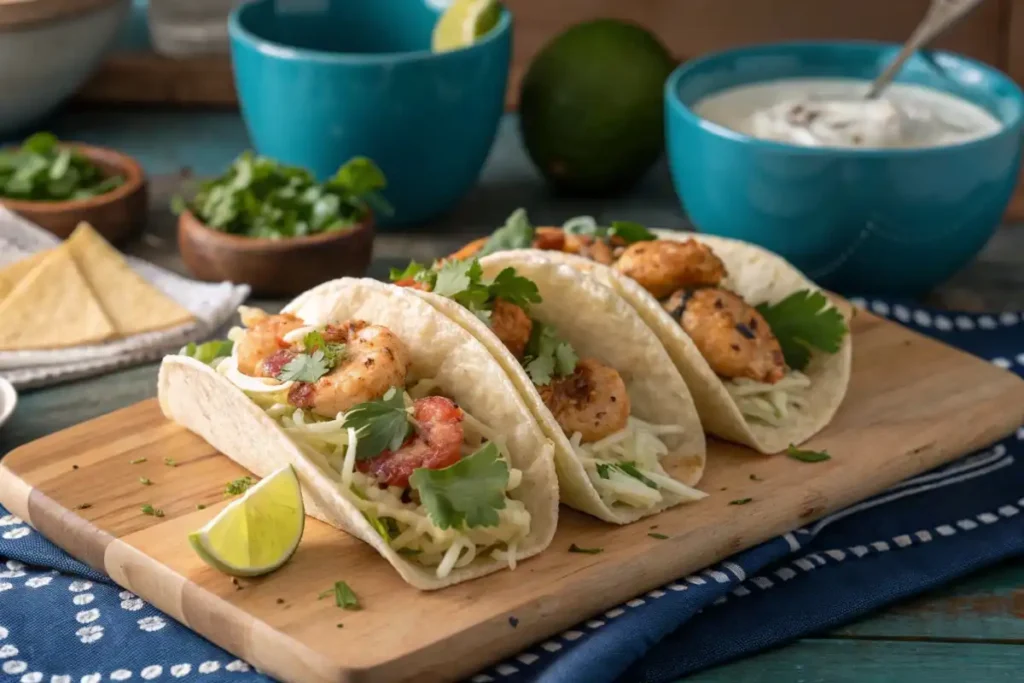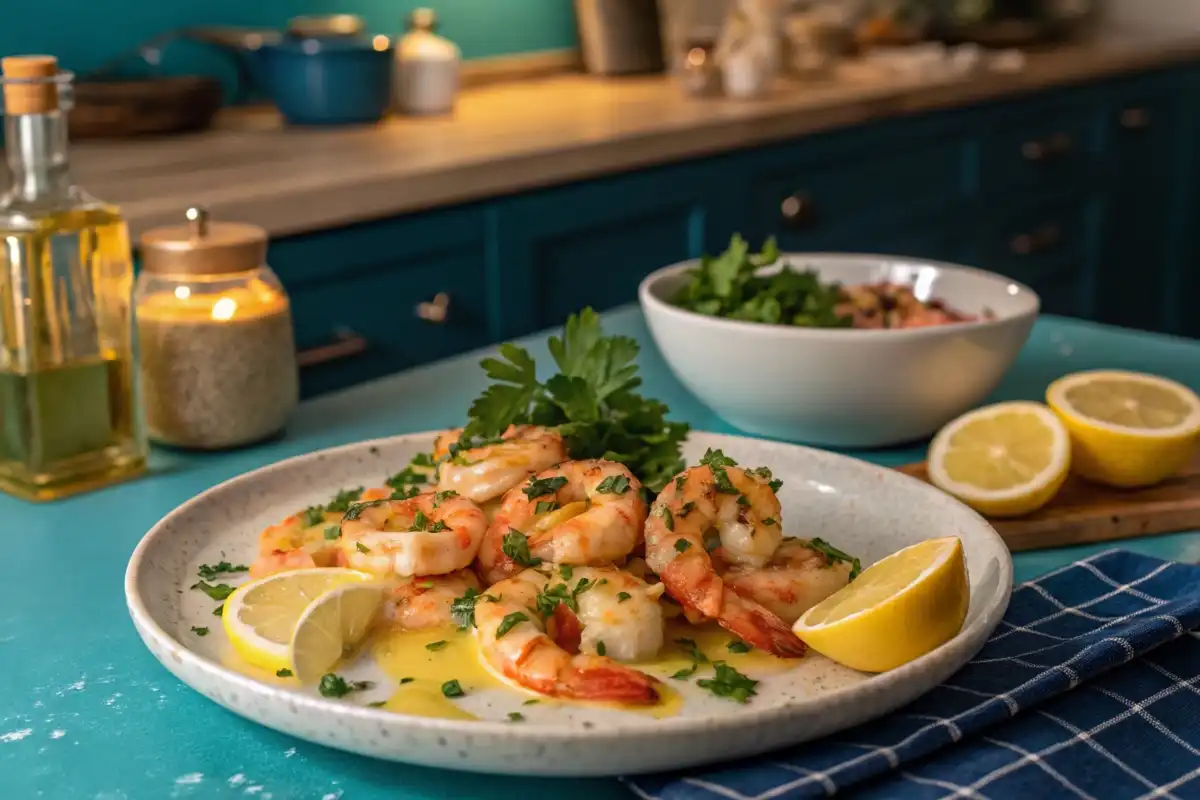Is langostino a shrimp or lobster? This question sparks curiosity among seafood lovers. At the present time, more U.S.-based food enthusiasts seek unique flavors and sustainable options. Therefore, understanding is langostino a shrimp or lobster? becomes crucial for anyone exploring new culinary adventures. However, these tiny crustaceans often confuse shoppers who wonder whether they belong in the shrimp family or the lobster family.
In addition, they appear on menus and in grocery aisles, tempting customers with their bright color and delicate taste.
To demonstrate their appeal, consider how easily they adapt to various recipes and cooking styles. In contrast to large lobsters, langostino tails offer convenient portions. Because of this convenience, many cooks appreciate adding them to salads, pastas, and comforting soups.
Ultimately, discovering the truth behind is langostino a shrimp or lobster? can lead to delightful dining experiences.
Understanding the Basics
When you first hear is langostino a shrimp or lobster? you might assume it’s one or the other.
However, langostino is not a true lobster, nor is it exactly a shrimp. In reality, langostino refers to the tail meat of certain squat lobsters, a type of crustacean different from both shrimp and lobsters.
Because they share some taste similarities, people often confuse them. In contrast, a true lobster is larger and has claws, while shrimp have a distinct shape and texture.
To clarify, think of langostino as a close relative. It belongs to the Galatheidae family. Although their shells turn red when cooked, and their meat tastes sweet, their smaller size sets them apart.
Furthermore, their texture tends to be more delicate than that of shrimp. Therefore, answering is langostino a shrimp or lobster? means understanding this subtle nuance: they come from squat lobsters, technically neither shrimp nor lobsters, but somewhere in between.

The Flavor Profile
To determine is langostino a shrimp or lobster? consider their flavor. Langostino tails taste like a mild hybrid of lobster and crab, with a hint of sweetness.
They lack the briny taste often found in shrimp. In addition, they do not deliver the intense, rich flavor associated with large lobster claws. Instead, their taste is gentle, subtle, and approachable.
For instance, imagine a buttery, slightly sweet bite that combines the best qualities of delicate seafood.
Because their flavor is mild, they pair well with various sauces, herbs, and spices. In contrast to stronger shellfish, langostino tails never dominate a dish. Instead, they enhance recipes, letting other flavors shine through.
Therefore, when pondering is langostino a shrimp or lobster? flavor-wise, think of them as a unique treat that stands apart.
Texture and Appearance: Is langostino a shrimp or lobster?
Visual cues can help answer is langostino a shrimp or lobster? At first glance, langostino tails are small, about the size of a large shrimp.
However, their shape can resemble a tiny lobster tail. When cooked, their shells turn a vibrant red. Beneath the shell lies tender, white flesh that is slightly firmer than shrimp meat but softer than lobster meat.
Because their size is small, they cook quickly. In addition, their texture feels pleasantly firm yet not chewy.
Therefore, they add a lovely bite to salads, pastas, or tacos. To demonstrate, picture a spoonful of creamy chowder dotted with these bright red morsels. Each bite yields a satisfying, tender chew. In conclusion, answering is langostino a shrimp or lobster? means recognizing their unique texture that falls between the two favorites.
Nutritional Benefits:
When you wonder is langostino a shrimp or lobster? you might also wonder about their nutrition. Langostino tails offer lean protein and essential nutrients.
They are low in fat and calories, making them suitable for health-conscious eaters. In addition, they contain minerals like selenium and iron, plus B vitamins that support overall wellness.
Their nutrient profile helps maintain energy levels, support immune function, and promote healthy muscles. Because they are low in saturated fat, they fit well into balanced diets.
Furthermore, they provide a way to enjoy the taste of luxury seafood without consuming as many calories as larger lobster portions. To sum up, adding langostino to your menu brings both flavor and health benefits.
Nutritional Data (Approx. per 3 oz. serving)
| Nutrient | Amount |
|---|---|
| Calories | ~90 kcal |
| Protein | ~15 g |
| Total Fat | ~1 g |
| Saturated Fat | ~0.2 g |
| Carbohydrates | ~0 g |
| Sugar | 0 g |
| Fiber | 0 g |
| Sodium | ~190 mg |
| Cholesterol | ~60 mg |
| Iron | ~4% DV |
| Calcium | ~2% DV |
| Selenium | ~35% DV |
| Vitamin B12 | ~20% DV |
(Values are approximate and vary by source and preparation.)
Buying and Storing Langostino: Is langostino a shrimp or lobster?
Now that you know is langostino a shrimp or lobster? you might want to try them at home. At the present time, many U.S. supermarkets sell frozen langostino tails.
Check the seafood section or ask your fishmonger. If not available locally, online seafood retailers can deliver them right to your door.
When selecting langostino tails, look for a reliable source. Because quality matters, choose products with a reputable label and proper packaging. Once purchased, store them in the freezer until ready to use.
If thawed, keep them chilled and consume within a day or two. Proper storage ensures optimal flavor and texture. In addition, always follow instructions on the packaging. Eventually, well-chosen and correctly stored langostino tails lead to delicious meals.
Cooking Methods: Is langostino a shrimp or lobster
Once you tackle is langostino a shrimp or lobster? you can focus on how to cook them. Fortunately, these tails adapt to various cooking methods. Because they are small and tender, they cook quickly. Avoid overcooking to maintain their delicate flavor and texture.
Popular Cooking Methods:
- Sautéing: Lightly sauté langostino tails in butter or oil with garlic, herbs, and a splash of lemon. Cook for about 2-3 minutes until opaque.
- Steaming: Gently steam them over simmering water for a few minutes. In addition, add fresh herbs or citrus zest for subtle aromas.
- Grilling: Thread them on skewers with vegetables, brush with oil and seasonings, and grill briefly. Their slight sweetness pairs well with smoky flavors.
- Boiling: Simmer them gently in seasoned broth or salted water for a minute or two. They are done when opaque.
- Stir-Frying: Add them at the end of a vegetable stir-fry for a protein boost. Cook just long enough to heat through.
In conclusion, because langostino tails cook fast, keep an eye on them. Overcooking makes them tough. In contrast, correct timing preserves their sweetness and soft bite.

Serving Suggestions and Pairings: Is langostino a shrimp or lobster?
After solving is langostino a shrimp or lobster? you can start experimenting with recipes. Their mild flavor works well with various ingredients. In addition, they pair nicely with fresh herbs, garlic, citrus, and light spices. Because they are versatile, try them in appetizers, soups, mains, or even light salads.
Delicious Ideas:
- Creamy Pasta Dish: Toss langostino tails with fettuccine, a light cream sauce, and fresh peas. Garnish with parsley.
- Zesty Salad: Combine chilled langostino tails, crisp lettuce, cherry tomatoes, avocado, and a lemon vinaigrette.
- Cozy Chowder: Stir them into a creamy corn chowder for a sweet, delicate seafood note.
- Tacos or Wraps: Stuff them into soft tortillas with shredded cabbage, lime crema, and cilantro for a bright, handheld treat.
- Simple Appetizer: Serve them lightly seasoned with melted butter or a lemon-garlic dip.
Furthermore, their subtle sweetness complements grains, mild vegetables, and light sauces. Avoid overly intense sauces that might overshadow their gentle taste. Ultimately, consider langostino tails as a blank canvas for your culinary creativity.

Culinary History: Is langostino a shrimp or lobster?
To fully answer is langostino a shrimp or lobster? consider their origins. Langostino comes from squat lobsters found in various cold and warm waters, including regions near Chile. Historically, they were less common in American markets. However, global trade and evolving food trends have increased their availability.
At the present time, many restaurants and home cooks embrace langostino tails as a cost-effective alternative to lobster. Their rise in popularity reflects a growing interest in diverse and sustainable seafood options. In contrast to the past, when only a few knew about them, langostino now appears in cookbooks, online recipes, and culinary blogs.
Sustainability and Sourcing
When asking is langostino a shrimp or lobster? consider sustainability. Responsible sourcing matters. Because oceans face challenges, choosing seafood from well-managed fisheries supports long-term availability.
Look for certifications from reputable organizations. Check if the brand shares information on their harvesting practices.
In addition, many suppliers now follow guidelines to reduce bycatch and protect fragile habitats.
By choosing responsibly sourced langostino, you support marine ecosystems. Eventually, this ensures future generations can enjoy these delicate crustaceans. Therefore, make informed decisions, just as you would with any seafood purchase.
Health Considerations
When pondering is langostino a shrimp or lobster? also think about dietary aspects. Langostino tails are generally safe and nutritious for most individuals.
However, those with shellfish allergies must avoid them. Consult a healthcare professional if unsure.
Because they are low in fat and calories, langostino supports weight management goals. Their lean protein can help maintain muscle mass and support a balanced lifestyle. In addition, their B vitamins, minerals, and lean protein content make them a smart choice for many diets. Just remember to season and prepare them with healthful methods.
Popular Myths and Misconceptions
Sometimes confusion arises around is langostino a shrimp or lobster? Some think they are baby lobsters, but they are not.
Others assume they are just fancy shrimp. In reality, they belong to the squat lobster family, which sits between crabs and lobsters in the crustacean world.
Because many restaurants label them in ways that cause confusion, consumers get mixed messages.
To demonstrate, some menus might say “langostino lobster” to highlight their lobster-like taste. However, understanding the truth helps you make informed choices. At the present time, more chefs clarify their origin, helping diners appreciate them for what they are: unique, tasty crustaceans.
Frequently Asked Questions
Q: Are langostino tails good for a low-fat diet?
Yes. They are low in fat and calories, making them suitable for health-conscious diets.
Q: Do langostino tails taste fishy?
Not at all. They have a mild, slightly sweet seafood flavor, similar to a blend of lobster and crab.
Q: Where can I buy langostino tails?
At the present time, many supermarkets, seafood markets, and online retailers carry langostino tails. Choose reputable sources to ensure quality.
Q: Can I serve langostino at special dinners?
Absolutely. Their sweet taste and appealing appearance make them perfect for festive meals, appetizers, or elegant main courses.
Q: Do children enjoy langostino?
Many do. Because the flavor is mild and not overly fishy, children may find them pleasant. Pair them with familiar ingredients and keep seasonings simple.
Q: What is a langostino tail? A langostino tail is the edible tail portion of a squat lobster, a small crustacean. They are not true lobsters, but their flavor and texture resemble a cross between lobster and shrimp…
Q: Are langostino tails healthy? Yes. Langostino tails are a lean source of protein, low in fat, and contain essential vitamins and minerals. They fit well into a balanced diet and offer nutritious value…
Q: How do you eat langostino? You can eat langostino tails in various ways. For instance, sauté them in butter, add them to salads, stir them into soups, or top pasta dishes. They cook quickly and adapt to many recipes…
Q: How do I store leftovers?
Store leftovers in an airtight container in the refrigerator and use them within a day or two. Reheat gently to avoid toughening the meat.
Q: Are langostino tails always sold cooked?
Most langostino tails available in U.S. markets are pre-cooked and frozen. Simply thaw, warm, and serve. Check packaging for details.
Conclusion
In conclusion, is langostino a shrimp or lobster? The answer is neither. Langostino comes from squat lobsters, creating a unique category distinct from both shrimp and lobster.
Because they combine subtle sweetness, tender texture, and versatility, these crustaceans offer exciting culinary possibilities.
At the present time, langostino tails are more accessible than ever. By learning their origins, flavor, and proper cooking techniques, you can incorporate them into your kitchen with ease.
Eventually, understanding is langostino a shrimp or lobster? will guide you toward delicious recipes, balanced meals, and delightful seafood experiences.
